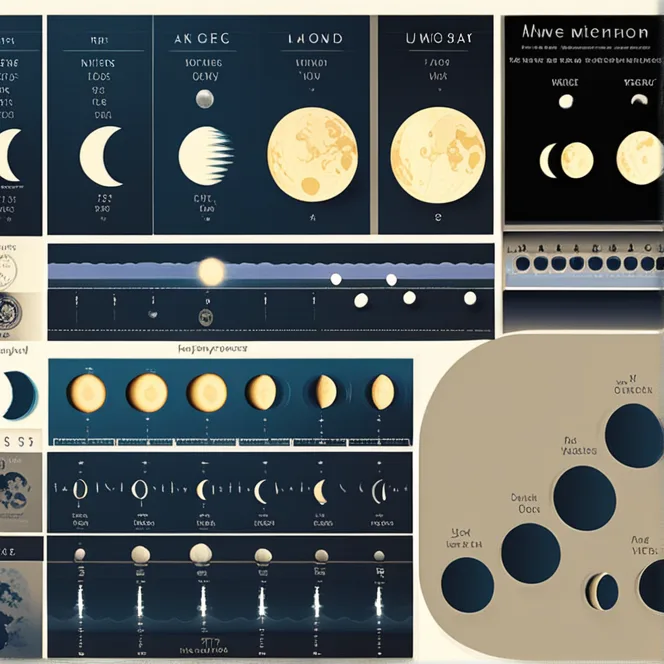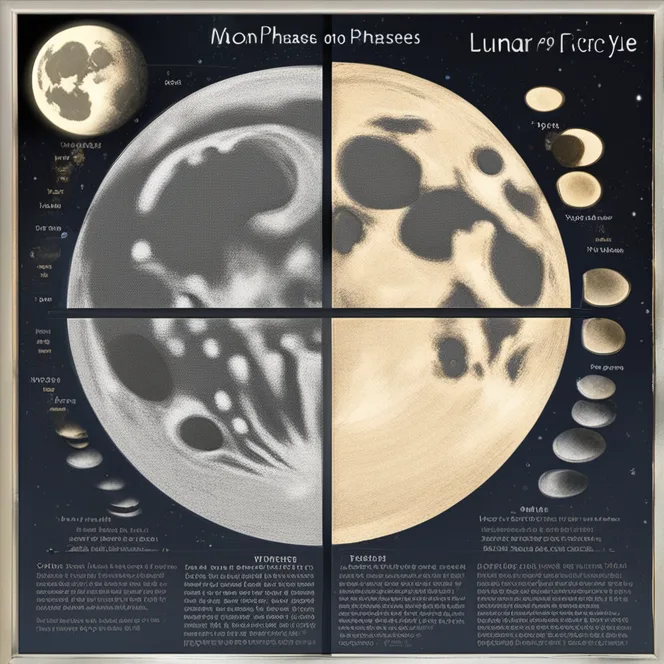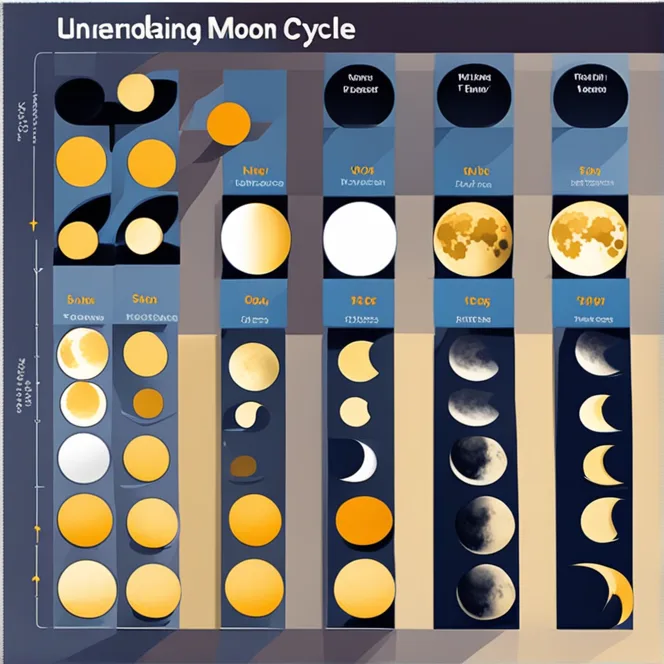
Exploring Phases Of Lunar Cycle
Delve into the celestial mechanics of the lunar cycle and discover the eight distinct phases of the Moon that guide us through the night sky.
article by Priya Deshmukh
The Enigma of Moon Phases
The Moon, Earth's constant companion, has fascinated humanity throughout history, its changing face inspiring myth, timekeeping, and a sense of wonder. The lunar phases represent the Moon's appearance as it orbits our planet, an interplay of solar illumination and celestial perspective. There are eight distinct phases, each with its own unique characteristics. These phases occur approximately every 29.53 days, this cycle being known as a synodic month. Understanding these phases not only deepens our connection to the night sky but also underpins the practices of astrology and horoscope readings.
New Moon: A Celestial Beginning
The lunar cycle commences with the New Moon, a phase where the Moon and Sun align, rendering our natural satellite virtually invisible against the daytime sky. This alignment marks the start of the lunation, a term referring to one complete cycle of phases. During the New Moon, it is positioned between the Earth and Sun, with its dark side facing us. This phase symbolizes new beginnings and is often associated with introspection and setting intentions in astrological practices.

Waxing Crescent: A Sliver of Promise
As the Moon travels eastward in its orbit, a sliver of light becomes visible on the right edge—a phase known as the Waxing Crescent. This represents the Moon's emergence from the Sun's glare and signifies growth and accumulation. In metaphorical terms, if the New Moon is seen as the planting of a seed, the Waxing Crescent could be likened to the first signs of germination. The increasing illuminated portion heralds the Moon's journey towards fullness.

First Quarter: The Moon Gains Strength
The First Quarter phase, also known as a Half Moon, occurs when the Moon is 90 degrees away from the Sun, displaying half of its illuminated side. This is a time of action and decision-making, reflecting the balance between light and shadow. Visibly, the Moon appears as a perfect half-circle in the sky. This phase often prompts a push towards progress in astrology and is thought to be a time to overcome obstacles and make important moves.
Waxing Gibbous: Nearly Full
In the Waxing Gibbous phase, more than half of the Moon's face is illuminated, but it has not yet reached fullness. It represents fine-tuning and adjustment, an effort to complete and perfect endeavors initiated earlier in the lunar cycle. The term 'gibbous' originates from a Latin word meaning 'humpbacked', aptly describing this bulging appearance. With its growing brilliance, it encourages a final assessment and preparation before completion.
Full Moon: A Spectacle of Completion
Celebrated in countless cultures and legends, the Full Moon phase is when the Earth lies between the Moon and Sun, and the entirety of the Moon's surface reflects sunlight back to us. It is a time of illumination, both literally and metaphorically, often linked to the climax or culmination of efforts. The Full Moon bears significant importance in astrology for its powerful influence over emotions, behavior, and mystical energies.

Waning Gibbous: The Reflection
After the peak of the Full Moon, light recedes in the Waning Gibbous phase, known as the 'disseminating' Moon. This symbolizes sharing, communication, and introspection. Marking the beginning of the Moon's return to darkness, this phase encourages reflection on what has transpired and how to distribute newly gained insights. The gradual decrease in light invites a focus inward, prompting consideration of personal revelations and wisdom.
Last Quarter: A Reassessment
The Last Quarter, or the Third Quarter Moon, sees the left half of the Moon illuminated while the right half merges into the night's embrace. It is a time for reevaluation, release, and letting go of what no longer serves the greater journey. Functioning as a mirror to the First Quarter, this phase also reflects balance, yet with a focus on shedding and decluttering in preparation for the cycle's renewal.
Waning Crescent: The Final Sliver
Finally, the cycle wanes to the Waning Crescent, where the thinning sliver of light dwindles to obscurity. This intimate phase encourages surrender, rest, and contemplation. As the Moon returns to its alignment with the Sun, it invites us to prepare for another lunar cycle, thus intertwining the endings with fresh beginnings. In the ephemeral glow of the Waning Crescent, we close one chapter and quietly anticipate the next.
Published: 12/12/2023
Modified: 12/12/2023
More predictions
Come back here soon to learn more about yourself and your future


Moon Phase Soulmate Connections
Explore the mystical link between the lunar cycle and finding your destined partner in our insightful article on moon phase soulmate connections.


Decoding The Moon Phase Lunar Calendar
Uncover the secrets of the moon's cycles and their impact on astrology through our concise guide to the Moon Phase Lunar Calendar.


The Moon's Journey Through The Sky
Explore the influence of the moon's phases with our insightful moon phase calendar guide, essential for all followers of celestial rhythms.